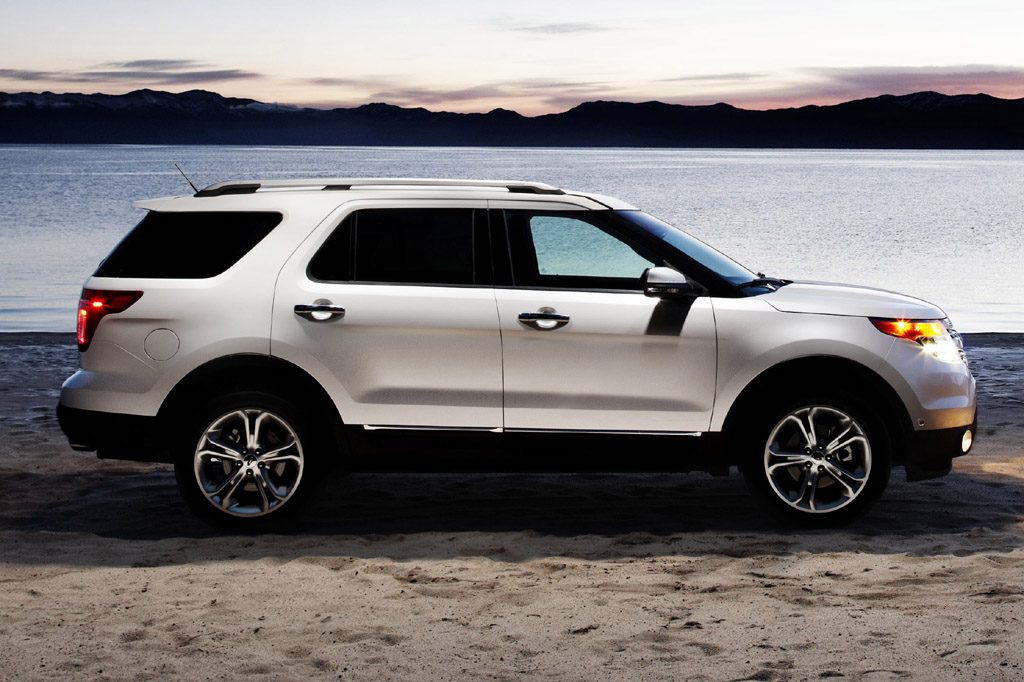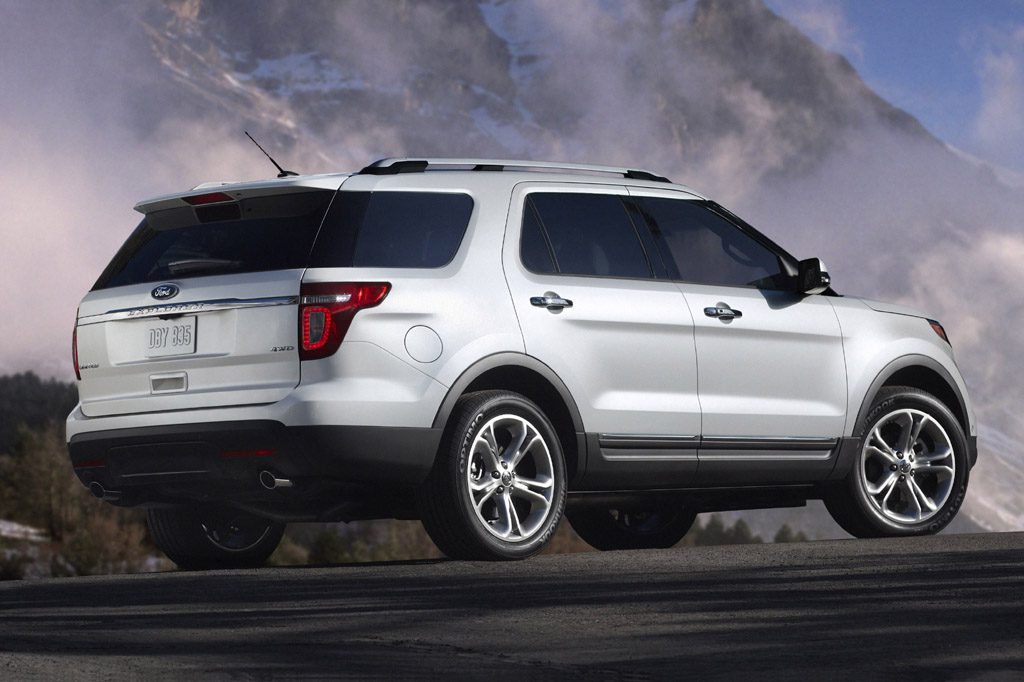| Midsize SUV; Built in USA |
|
|
| Good condition price range: $8,200 – $34,700* |

2011 Ford Explorer Front

2011 Ford Explorer Profile

2011 Ford Explorer Rear

2011 Ford Explorer Interior

2011 Ford Explorer Rear-2
| Pros: |
|
| Cons: |
|
Ford’s re-imagined Explorer is a very nice seven-passenger crossover that, unfortunately, competes against a lot of other very nice seven-passenger crossovers. It’s both competent on-road and more capable off-road than most in this class. Though it’s been an extra-cost option only on 2WD Explorers, the four-cylinder engine introduced for 2012 is a welcome addition. That engine brings the promise of impressive fuel economy (for the class), with laudably minor compromise in overall performance. The MyFord Touch interface and voice-activated navigation system are on the cutting edge of technology, but our experience with it has been less than impressive. Ford officials are aware of the issues and have been working to correct them. Explorer’s third-row seat is tough to access, yet surprisingly comfortable. Overall, this Explorer strikes a good balance between the rugged character of its predecessor and the car-like dynamics of a modern crossover. If that’s what you’re looking for in an SUV, take a close look.
Overview
Redesigning of the Ford Explorer for 2011 gave it freshened styling, a new engine, and new features. This venerable nameplate moved to crossover-style unibody construction, sharing elements of its basic design with the Ford Taurus. All previous Explorers had used traditional truck-type construction. Although the 2011 model was about 1 inch shorter in wheelbase than the 2010 version, it measured about 4 inches longer overall. Trim levels included Base, volume XLT, and top-line Limited. Each was available with front-wheel drive or all-wheel drive. The AWD system included a console dial that could alter throttle and other settings to accommodate mud, sand, and snow. Standard on all models was a 290-horsepower, 3.5-liter V6 engine. An optional turbocharged 240-horsepower four-cylinder engine was arrived for the 2012 model year. The sole transmission was a six-speed automatic. Maximum towing capacity was 5,000 pounds with the V6.
Standard safety features included all-disc antilock braking, traction control, an antiskid system with rollover sensing, curtain-side airbags for the first two rows, and front-side airbags. Explorers employed MyFord Touch, which replaced traditional audio and climate controls with touchscreens and voice activation. They also incorporated Ford’s Sync cell phone and digital-music player control. Rear-obstacle detection was standard on the XLT and Limited. Power-adjustable pedals, driver-seat memory, dual-zone automatic climate control, a rearview camera, remote engine start, and keyless entry/engine start were standard on the Limited. Explorer rivals included the Chevrolet Traverse, Honda Pilot, and Mazda CX-9.
Yearly Updates
| 2012 Explorer Front-wheel-drive versions of the 2012 Ford Explorer got a new four-cylinder engine option. The new “Ecoboost” turbocharged 2.0-liter engine developed 240 horsepower, mating with a six-speed automatic. Maximum towing capacity with the four-cylinder engine was 2,000 pounds, versus 5,000 for the V6. |
| 2013 Explorer Not much was new for the carryover Base, XLT, and Limited trim levels. Just the usual minor feature shuffling and updated paint colors. The big news for 2013 was the addition of a new Sport model. Equipped about the same as the Limited, the Sport is designed for performance with the most powerful engine ever offered in an Explorer. |
| 2014 Explorer For 2014, automatic headlights were standard on all Explorers and adaptive cruise control was newly optional on Limiteds. |
| 2015 Explorer For 2015, the Ford Explorer got standard 18-inch wheels on its base model and an appearance package for XLT models. |
| 2016 Explorer The 2016 Ford Explorer had revised styling and suspension. Added that year was a new topline Platinum model powered by a turbocharged 3.5-liter V6. The available turbocharged 2.0-liter 4-cylinder engine was replaced by a more powerful turbocharged 2.3-liter 4-cylinder unit. The new 4-cylinder was available with all-wheel drive, whereas the old four was front-drive only. |
| 2017 Explorer After a fairly thorough refresh for 2016, the Ford Explorer saw two changes of note for 2017. A new SYNC 3 touchscreen infotainment system replaced the unloved MyFord Touch interface, and a new Sport Appearance Package debuted for the XLT model. |
| 2018 Explorer Ford Explorer had freshened styling for 2018. Also, a Wi-Fi hotspot was newly available. |
